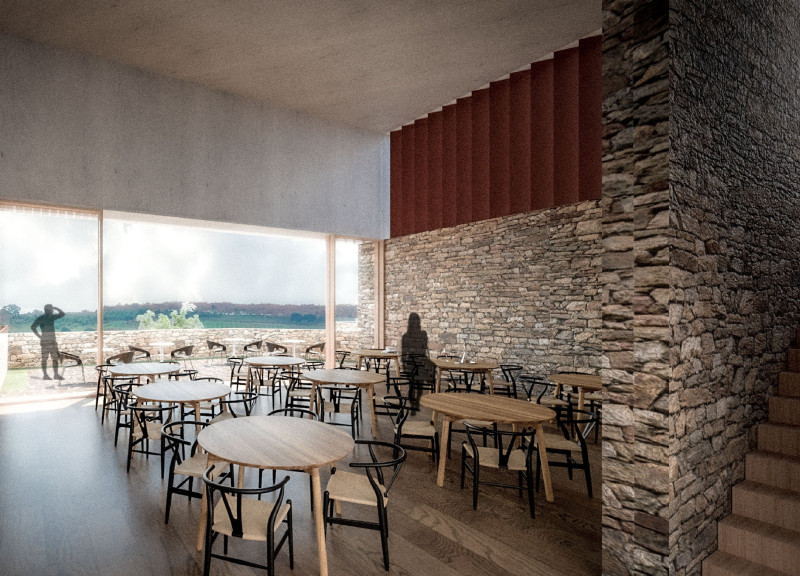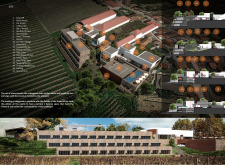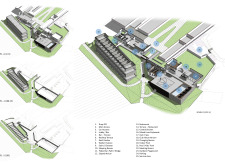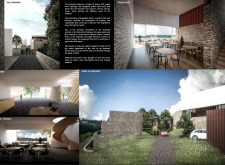5 key facts about this project
The project sits near a vineyard, combining the built environment with the natural landscape. It enhances the setting and creates meaningful experiences for its users. By focusing on integration and interaction, the design allows for smooth movement between indoor and outdoor areas, fostering a sense of continuity across different spaces.
Concept and Organization
The design principle revolves around understanding and interpreting the existing structures that shape the site. The architects emphasize a contrast between the rough texture of the stone walls and softer color accents, creating a visual relationship that respects the historical backdrop. Spatial organization prioritizes easy movement, with elongated planes and openings connecting various areas. This layout encourages exploration and engagement throughout the building.
Patio Integration
Patios are essential features of the design, intended to be flexible and useful. These outdoor spaces provide access to natural light and connect users with the environment. The patios promote relaxation and interaction, extending the interior experience into the landscape outside. They represent spaces where guests can pause and appreciate the surrounding beauty.
Room Configuration
Rooms are arranged in a staggered pattern, moving away from traditional box-like layouts. This design choice aligns the buildings with the slope of the land, allowing each room to have its own terrace or balcony with views of the vineyard. As a result, the architecture blends with the terrain, enhancing the occupants' experience. Each space encourages contemplation of the landscape and its changing vistas.
Lobby Design
The lobby serves as a key gathering point, featuring openings and long planes that transition between indoor and outdoor settings. This thoughtful design creates a flow among the various functions of the hotel and encourages guests to move freely. In this area, the mix of textures and natural light contributes to an inviting atmosphere. Guests are drawn toward the views of the vineyard, making the lobby not just a passageway, but a vital part of the overall experience.






















































